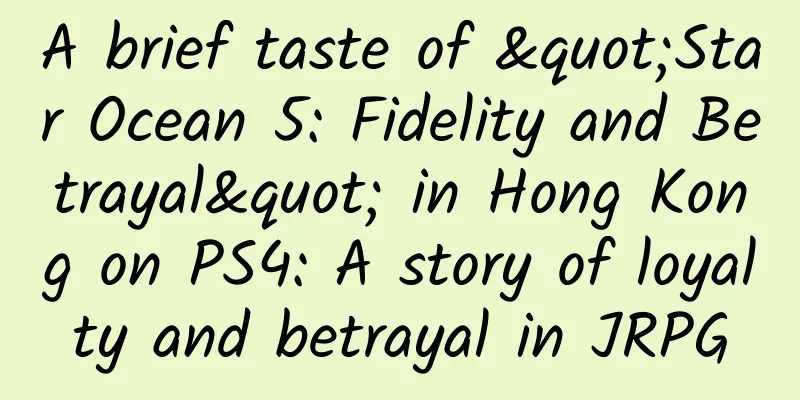What is "Blue Starfish"? Introducing the Drifting Sea Steam Interface Buoy "Blue Starfish"

|
1. Introduction to Drifting Air-Sea Interface Buoy The "Blue Star" series of drifting sea-air interface buoys are the first "miniaturized, lightweight, and intelligent" drifting observation systems successfully developed by the research team of the National Ocean Technology Center based on the new concept of "low-cost, grid-based, and globalized" sea-air interface observation. It can be used to carry out low-cost networked observations of meteorological and hydrological profile data at a height of 3 meters above the sea surface in a drifting manner, and the cost is about one-thirtieth of that of deep-sea anchored buoys. It has revolutionized the sea-air interface measurement method, has the potential for global marine business observation, has completely independent intellectual property rights, and is in an international leading position in this field. The drifting air-sea interface buoy has been adopted as the main observation equipment by relevant marine projects in my country and the international air-sea interface program initiated by China, and is used to carry out global air-sea interface grid observation, and has been put into business application in the Ministry of Natural Resources. This move will greatly enhance my country's deep-sea and polar business observation, scientific research, and marine environmental protection capabilities, solve the potential risk of global air-sea interface data being "stuck in the neck", promote the expansion of my country's air-sea interface observation to global waters, and enhance my country's global ocean observation and governance capabilities. Figure 1 Schematic diagram of the drifting air-sea interface buoy structure (left) and field observation map (right) 2. Breakthrough in key core technologies and achieve international leadership With the support of more than 20 projects, including the key R&D plan of the Ministry of Science and Technology, the scientific and technological breakthrough project of the Ministry of Industry and Information Technology, the 13th Five-Year Plan pre-research of the Central Military Commission's equipment and development, the 13th Five-Year Plan pre-research of the Navy, the "Aoshan Science and Technology Innovation Plan" of Laoshan Laboratory, and the business projects of the Ministry of Natural Resources over the years, the center's scientific research team has successively made breakthroughs in many key technologies. (1) A breakthrough in the long-term reliability and attitude stability technology of small single-column structures in complex and harsh sea conditions. Research on the structural reliability and attitude stability of small slender single-column platforms under complex ocean conditions with coupled wind, wave and current is carried out, and the motion response model and stress characteristic model between the platform structural characteristics and the environment are established. Breakthroughs are made in the structural reliability and attitude stability of small slender single-column platforms under transient impact and long-term resistance to severe sea conditions and fatigue. 15 months of ocean and 12 months of polar observations are achieved, as well as accurate and stable measurements under a Category 17 super typhoon, which will enhance the cross-year observation capabilities of drifting air-sea interface buoys in global oceans. (2) A breakthrough was made in the research and development of a series of miniature meteorological and hydrological sensors and their high-reliability and high-integration integrated application technologies. In view of the mutual influence between the multi-sensor layout and the small and lightweight platform, the key technologies of the micro-atmospheric wind, temperature, humidity and pressure measuring instruments, high-sensitivity probe-type water temperature sensors, and miniaturized wave measuring instruments were studied, including the structural design, measurement and online quality control algorithms, and the main control system. The research also focused on the highly integrated design with the drifting sea-air interface buoy platform. The lightweight and low-resistance design of the 3-meter-high meteorological measurement sensor was achieved, reducing the influence of the sensor on the buoy platform's swinging posture and structural characteristics under long arm conditions. The highly integrated design of meteorological and hydrological sensors and buoy platforms was achieved, ensuring the measurement safety and accuracy of the buoy in a swinging state, and improving the observation effectiveness of the drifting sea-air interface buoy in complex sea conditions. The accurate acquisition of parameters such as wind speed, wind direction, air temperature, air pressure, relative humidity, sea surface temperature, flow velocity, flow direction, wave height, wave direction, and wave period on a 33.6 kg small and lightweight platform was achieved, as well as the accurate calculation of sea-air sensible heat, latent heat, and momentum flux. (3) Small-scale “light-wave-chemical” multi-energy complementarity and diversified high-density stable energy storage and supply technology. In order to ensure the sustainability and high power of multi-composite environmental energy collection of solar energy and wave energy under complex sea conditions, the focus is on solving the miniaturization, lightweight and high-density design problems of composite energy collection devices for small drifting platforms. Breakthroughs are made in the highly integrated technology of thin-film solar chips and buoys, the dual-mode energy capture of wave energy shaking-heaving swing, and the dual-mode energy conversion wave energy collection technology of piezoelectric-electromagnetic coupling up-conversion; high-efficiency energy capture and high-density energy conversion of complex random wave motions are achieved in a limited space, and the dynamic model research and structural design of the dual-mode energy capture mechanism are carried out, the MEMS process development of the arrayed piezoelectric energy conversion mechanism, and the up-conversion coupling mechanism analysis and structural optimization of the heaving swing energy capture mechanism are carried out; the problems of efficient power management, storage and continuous and stable power supply in the process of multi-energy complementarity are solved to maximize the efficiency of energy capture and power supply. 3. Breakthrough in operational observation capabilities and develop global observation layout So far, more than 100 sets of drifting sea-air interface buoy observations have been applied, and more than 20 data and equipment application units have applied them. The on-site comparison with international standard anchored buoys has been completed three times, and the quality of observation data has reached the international advanced level; innovative application methods have been used to complete the drifting network applications of China's 35th, 36th, and 37th Antarctic scientific expeditions, the Western Pacific, the Kuroshio extension, super typhoons, and mesoscale vortices, etc. The observation range covers my country's offshore waters, the equatorial Pacific, the Western Pacific warm pool, the Kuroshio extension, the Sea of Japan, the Indian Ocean, the Antarctic westerly belt and other global high, medium and low latitude oceans, as well as the Luzon Strait, the Diaoyu Islands, the Huangyan Island, the Tsushima Strait, the Taiwan Strait and other straits. Refined observation of key areas and channels. The drifting air-sea interface buoy observation method has been recognized by domestic and foreign experts in air-sea interface observation, and the observation data has been evaluated and applied by many scientific research institutes at home and abroad. The observation data is accurate and reliable, reaching the international advanced level, and the equipment is stable, with the potential for operational observation in global waters. Experts from the center published an observation white paper at the World Observation Conference (OceanObs'19), advocating the application of drifting air-sea interface buoys as a new type of air-sea interface observation method, leading the air-sea interface drifting observation plan. At present, the drifting sea-air interface buoy has been used by the units under the Ministry of Natural Resources to carry out operational observations in the oceans and polar regions; by research institutes such as the Ocean University of China, Hohai University, China Shipbuilding, and the National University of Defense Technology to carry out scientific observations; and by the Naval Research Institute, the Sea Cucumber Naval Command and Support Brigade, the Northern and Southern Theater Navies and other military departments to carry out marine environmental protection for major maritime missions. The relevant applications have been widely reported by authoritative national media such as CCTV News, People's Daily, and Xinhua News Agency, with a good social impact. Figure 2 Northwest Pacific deployment application Figure 3 Antarctic westerly belt deployment application Figure 4 Global deployment and application trajectory of drifting air-sea interface buoys Figure 5 Some authoritative media reports |
Recommend
Is it expensive to produce the Qiannan photography mini program? Qiannan photography applet production cost and process
How much does Qiannan photography production quot...
How to repay Alipay Huabei installment in advance? Can it still be used after paying off in installments?
Ant Huabei is a credit consumption tool in the In...
Learn common Mac commands to help iOS development
[[183871]] Heavy technology Preface In the proces...
Judging from the sales of Double 11, the conclusion that the OTT industry is dying is absurd
In just 38 minutes, Tmall’s total sales reached t...
Can't measure trace elements accurately? This graphene sensor has a million times higher sensitivity!
Popular Science Times (Intern Wang Yuke) Engineer...
Qifen Academy "Dating Compass"
Qifen Academy's "Dating Compass" Re...
130 million tons of food gap attracts attention? Should families stock up on food to cope with food shortage pressure?
The food issue has always attracted public attent...
What can save you? Enterprise information security
In the past year, information security incidents ...
Is the FOTILE refrigeration hood and cooking center, which costs 28,980 yuan, leading a real trend or creating false demand?
On the evening of August 12, Fotile, a veteran co...
The truth behind why computers run so fast: How does the operating system become a "super scheduling master"?
When we use computers, we often open multiple pro...
How to plan topics in content operations
On August 27, 2014, an event known as the first f...
DJI dominates the consumer drone market, but what about the professional field?
The unsexy industrial drone market has become ext...
No need to install any apps! Here's a tip to stop spam calls and text messages
Many of my friends are deeply harmed by harassing...
Using the growth model to review Himalaya FM’s product growth
I am a product dog. Curiosity drives me to consta...
Overview of Mobile Web Development Specifications
[[140706]] The following specifications and sugge...









